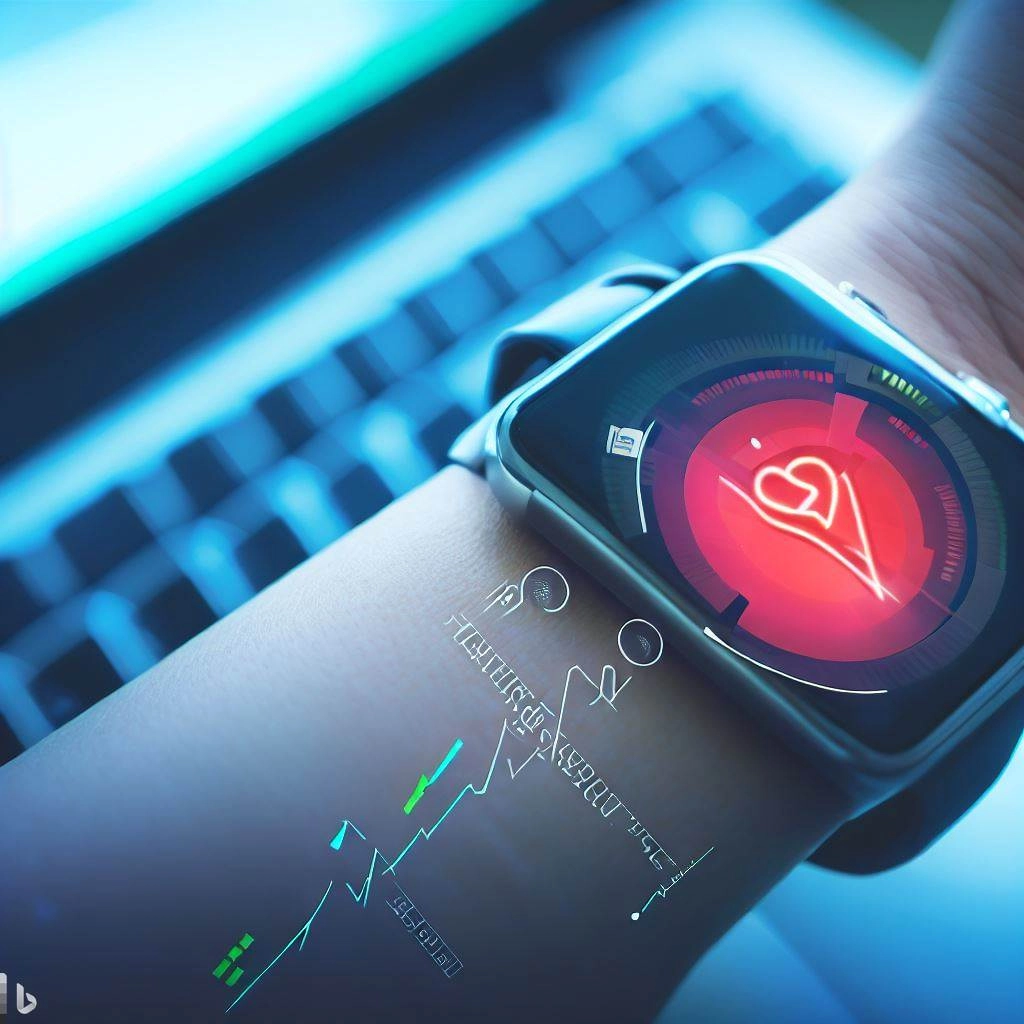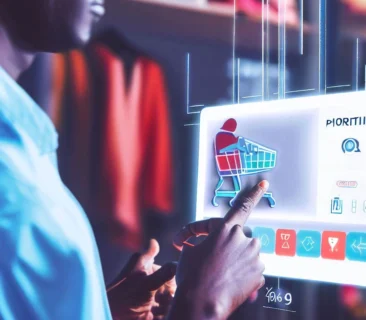Introduction:
Welcome to NextechPulse, your go-to source for the most cutting-edge insights into the world of technology and innovation. In today’s fast-paced healthcare landscape, staying updated on the latest disruptive technologies is more crucial than ever. In this article, we’ll delve into the fascinating realm of healthcare innovation and unveil the top 5 groundbreaking technologies that are reshaping the entire industry. From artificial intelligence-driven diagnostics to the telemedicine revolution, these innovation are set to revolutionize healthcare as we know it. So, let’s dive right in and explore how these advancements are poised to improve patient care, streamline processes, and redefine the future of healthcare.
1. AI-Driven Diagnostics: Transforming Healthcare with Data
In the realm of healthcare, the integration of Artificial Intelligence (AI) is rapidly changing the way we diagnose and treat illnesses. Gone are the days when a diagnosis depended solely on a doctor’s expertise. Today, AI-driven diagnostics are ushering in a new era of precision and efficiency in healthcare.
Harnessing the Power of Data
At the heart of AI-driven diagnostics lies the power of data. When a patient visits a healthcare facility, a vast amount of data is generated – from medical records and test results to images like X-rays and MRIs. AI algorithms can process this data swiftly and accurately, detecting patterns and anomalies that might escape the human eye.
Faster and More Accurate Diagnoses
One of the most significant advantages of AI-driven diagnostics is speed. While it might take a human doctor hours or even days to analyze complex medical data, AI can do it in seconds. This means that patients can receive their diagnoses much faster, allowing for quicker treatment and peace of mind.
Reducing Human Error
AI also helps reduce the risk of human error in diagnosis. Doctors, while highly skilled, are still prone to fatigue and oversight. AI, on the other hand, is tireless and objective. It doesn’t miss details, ensuring a higher level of accuracy in identifying health issues.
Personalized Treatment Plans
Another remarkable aspect of AI-driven diagnostics is the ability to tailor treatment plans to individual patients. By analyzing a patient’s unique medical history, genetic makeup, and lifestyle, AI can suggest personalized treatments that are more likely to be effective. This precision medicine approach can improve outcomes and minimize side effects.
Remote Healthcare
In today’s world, where remote healthcare is becoming increasingly important, AI-driven diagnostics are a game-changer. Patients can use smartphone apps or wearable devices to monitor their health, and AI can interpret this data in real-time. Doctors can then intervene when necessary, even if the patient is miles away.
Challenges and Ethical Considerations
While AI-driven diagnostics offer immense promise, they also come with challenges. Ensuring data privacy and security is crucial. Additionally, there’s the risk of over-reliance on AI, potentially undermining the role of healthcare professionals. Striking the right balance between AI and human expertise is essential.
2. Telemedicine Revolution: Bridging Gaps in Healthcare
Telemedicine, a term we hear more frequently these days, is revolutionizing the way healthcare is delivered. It’s like having a virtual doctor’s appointment from the comfort of your home.
Breaking Down Barriers
Telemedicine breaks down geographical barriers. No longer do you need to travel long distances to see a specialist. With a smartphone or computer, you can connect with healthcare professionals worldwide.
Convenience at Your Fingertips
Imagine you’re feeling unwell, but you don’t want to wait for hours in a clinic. Telemedicine allows you to schedule an appointment quickly, reducing waiting times and making healthcare more convenient.
Accessible Healthcare
For those in rural or underserved areas, access to healthcare can be challenging. Telemedicine bridges this gap by providing remote consultations, ensuring everyone has access to medical expertise.
Cost-Effective Care
Traditional healthcare can be expensive. Telemedicine often offers more affordable options, saving patients money on transportation and other associated costs.
Continuous Monitoring
Telemedicine isn’t just for one-time consultations. It enables continuous monitoring of chronic conditions. Devices at home can send real-time data to healthcare providers, ensuring timely intervention.
Empowering Patients
With telemedicine, patients become more engaged in their healthcare. They have easier access to medical records, test results, and treatment plans, promoting a sense of ownership over their well-being.
Challenges to Address
While telemedicine offers numerous benefits, challenges exist. Not everyone has access to the internet or suitable devices, which can create disparities in healthcare access. Additionally, ensuring the security and privacy of patient data in a digital environment is crucial.
The Future of Healthcare
As technology continues to advance, telemedicine will likely play an even more significant role in healthcare. It has the potential to bring healthcare to remote areas, improve convenience, and enhance patient outcomes.
3. Wearable Health Tech: Your Health, Your Wearable

Imagine having a device on your wrist that not only tells the time but also keeps tabs on your health. That’s the magic of wearable health technology.
Constant Health Monitoring
Wearable devices like smartwatches and fitness trackers do more than count steps. They monitor your heart rate, sleep patterns, and even stress levels 24/7, providing valuable insights into your well-being.
Encouraging a Healthier Lifestyle
These gadgets act as your personal health coach, nudging you to be more active, get enough sleep, and make healthier choices. They can set daily fitness goals and celebrate your achievements.
Early Warning System
Some wearables can detect irregular heartbeats, potentially alerting you to a heart issue before it becomes a severe problem. This early warning system can be life-saving.
Tracking Chronic Conditions
For those with chronic conditions like diabetes, wearable tech can be a game-changer. Continuous glucose monitoring and insulin delivery systems can help manage blood sugar levels effectively.
Empowering Patients
Wearable health tech empowers individuals to take charge of their health. You can share your data with healthcare providers for more personalized care and treatment adjustments.
Challenges to Consider
While wearable health tech offers remarkable benefits, there are challenges. These devices require regular charging and can be expensive. There are also concerns about data privacy and accuracy.
The Future of Health
As technology advances, wearable health tech will become even more sophisticated. It may integrate with medical devices, offering a comprehensive view of your health.
4. Robotic Surgery Advancements: Precision in the Operating Room
Imagine a surgeon working alongside a robot, both with a shared goal: ensuring your surgery goes smoothly and with exceptional precision. This is the reality of robotic surgery advancements.
Enhanced Precision
Robotic surgical systems offer unparalleled precision. The surgeon controls robotic arms, which can make micro-movements impossible for human hands. This precision can lead to better surgical outcomes.
Less Invasive Procedures
Robotic surgery often involves smaller incisions compared to traditional surgery. Smaller incisions mean less pain, reduced scarring, and quicker recovery times for patients.
Reducing Human Error
Robotic surgery reduces the risk of human error. Surgeons can view the surgical site in 3D, providing a clear, detailed picture, which enhances decision-making during the procedure.
Telemedicine and Remote Surgery
Robotic surgery can be conducted remotely, allowing expert surgeons to perform procedures on patients in different locations. This is especially valuable in emergency situations.
Training and Skill Development
Surgeons can use robotic systems for training and skill development. This allows for standardized training and ensures that surgeons are well-prepared before performing surgeries on patients.
Challenges and Considerations
Despite the advantages, there are challenges. Robotic surgery is costly, and not all healthcare facilities have access to this technology. Additionally, there’s a learning curve for surgeons to master these systems.
The Future of Surgery
As technology advances, robotic surgery will likely become more widespread and sophisticated. The future holds the promise of even more precise, minimally invasive, and accessible surgical procedures.
5. Blockchain in Healthcare: Securing Your Health Data
You’ve heard of blockchain as the technology behind cryptocurrencies, but did you know it’s also revolutionizing healthcare? Let’s explore how blockchain is reshaping the healthcare industry.
Secure and Immutable Health Records
Blockchain ensures that your medical records are secure and tamper-proof. Each record is stored in a block, and once it’s there, it cannot be altered without leaving a trace. This ensures the integrity of your health data.
Streamlined Data Sharing
Traditionally, sharing medical records between different healthcare providers has been cumbersome. Blockchain simplifies this process. With patient consent, healthcare professionals can access your records quickly, leading to more efficient and coordinated care.
Enhanced Data Privacy
Your health data is sensitive, and protecting it is crucial. Blockchain allows patients to have more control over who can access their medical information. Patients can grant access on a case-by-case basis, ensuring their privacy.
Interoperability Across Systems
In the past, healthcare systems often used different incompatible systems for record-keeping. Blockchain provides a standardized format that allows different systems to communicate and share data seamlessly.
Clinical Trials and Research
Blockchain can also revolutionize clinical trials and medical research. It can securely record and share data, making trials more transparent and efficient.
Challenges to Address
While blockchain offers significant advantages, it’s not without challenges. Implementation can be complex and costly. Ensuring the security of blockchain systems and educating healthcare professionals about this technology are essential steps.
The Future of Healthcare
As blockchain technology continues to mature, its role in healthcare will likely expand. It has the potential to create a more patient-centric and secure healthcare ecosystem, ensuring the integrity and privacy of your health data.
Closing:
In closing, the integration of blockchain technology into healthcare is not just a technological advancement; it’s a promise of a more secure, efficient, and patient-centric healthcare ecosystem. With secure and immutable health records, streamlined data sharing, enhanced data privacy, and the potential to transform clinical trials and research, blockchain’s impact is undeniable.
While challenges such as implementation complexity and cost exist, the potential benefits for both patients and healthcare providers are worth the investment. As blockchain technology continues to evolve and become more accessible, we can look forward to a future where our health data is not only safeguarded but also utilized to its full potential, ultimately leading to better healthcare outcomes for all.
So, keep an eye on the horizon, for the intersection of blockchain and healthcare holds the promise of a healthier, more connected, and more secure future for us all.




